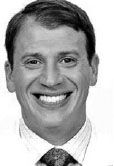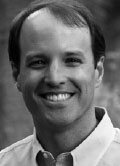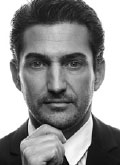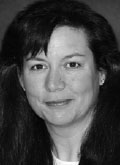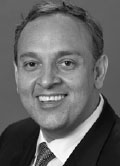OVERVIEW
Surgical Uprighting of Lower Second Molars
Do you mount models?
About a quarter of the respondents reported that they routinely mounted models, while 44% said they mounted models occasionally. On the other hand, 35% indicated that they never mounted models. More than three-quarters of those who mounted models used Frankfort horizontal as the orientation plane, 15% used true horizontal, and a few used other baseline orientations.
If you mount models before treatment, do you mount and analyze models after treatment for comparison?
Two-thirds of the respondents did not mount or analyze models after treatment. Another twenty-one percent reported that they did so routinely, while the remainder occasionally mounted and analyzed post-treatment models.
What do you believe is the rationale for mounting models?
Similar articles from the archive:
- THE READERS' CORNER Diagnostic Records and Initial Phone Calls October 2001
- THE READERS' CORNER Thermal Archwires and In-Office Computers January 1998
- THE READERS' CORNER September 1989
More than 75% of the clinicians believed the prime reason to mount models was for assessment of centric relation/centric occlusion relationships. Many also felt that mounting enabled them to identify occlusal and incisal interferences, especially in adults. The second most frequent response, however, was that there was no rationale for mounting models. A few respondents indicated that mounting models facilitated communication with referring dentists. Other reasons included working up surgical cases, evaluating TMD situations, assessing the degree of difficulty of a case, and determining the cant of the occlusal plane.
Typical comments were:
- "I mount models to diagnose and treatment plan the occlusion in CR. However, the mounting is only as good as the centric-relation occlusal registration."
- "I mount models whenever significant occlusal equilibration is evident."
- "I don't mount models, because there is no evidence indicating that articulators know how to chew."
What types of patients especially benefit from mounting models?
The vast majority believed that patients (particularly adults) with CR/CO discrepancies, surgical patients, and TMD cases would benefit most from mounting models. Other categories included Class III cases, patients with vertical problems, multidisciplinary situations, and patients requiring unusual extractions.
How can mounting models harmonize CR and CO?
The most frequent answers, given by equal numbers of respondents, were "It can't" and "I don't know". Closely following these replies was the belief that mounting models helped identify prematurities that would disrupt the CR/CO balance.
Some representative remarks:
- "It can't. Mounting is only a tool to quantify and/or identify CO/CR discrepancies; it can't harmonize them."
- "Theoretically, by evaluating the posterior prematurities in CR you can arrive at an appropriate treatment plan to eliminate them."
Do you believe CR should coincide with CO?
The definitive responses of "Yes" and "No" were relatively equal--27% and 22%, respectively. The remainder of the clinicians were more ambivalent, with responses such as, "It should be very close", "If possible, but not necessary", "Not always", and "In most cases".
Dr. James Delhom of Gretna, Louisiana, noted, "Most gnathologists would probably find differing CRs depending on how each manipulates the mandible, which would probably not equal CO. I find that usually the mandible is biting where it functions best in its acquired bite."
How much slide is acceptable?
With the exception of one respondent, all the clinicians believed some slide was acceptable. More than 55% felt 1-2mm would be acceptable, a few thought 2-3mm would be acceptable, and a few believed nothing more than 1mm was tolerable. The next most frequent response (33%) was that there was no specific acceptable range, because the amount of slide was so highly variable. There seemed to be a consensus that anteroposterior slides were more acceptable than lateral slides.
Can condylar position be assessed without mounting models?
Seventy-three percent of the respondents thought condylar position could be assessed without mounting models, while only 13% believed it could not. The rest of the respondents were less specific, giving replies such as "It depends on tolerance", "It's difficult to determine", and "I don't know".
Drs. Richard McDaniel and M.M. Sternstein of Springfield, Illinois, replied, "Not well. Properly seated condylar position and its effect on occlusion can best be appreciated with mounted models."
How does knowledge of condylar position affect your treatment plan?
Most of the respondents indicated that a determination of the CR/CO relationship influenced their treatment plans, with a few clinicians emphasizing this as a strong factor, especially in TMD cases. Conversely, 13% said that knowledge of condylar position had no effect on their treatment plans.
Dr. Randy Gittess of Winter Springs, Florida, said, "Usually it only has an effect when the CR/CO discrepancy has a clinical manifestation such as a popping joint, bruxism, pain, etc."
Dr. Harvey Oury of Cincinnati, Ohio, reported, "The CR/CO relationship affects my treatment plan. If CR is repeatable and consistent with CO, and the patient is symptom-free, I don't really care where the condyles are."
To what extent is there a range of condylar positions due to individual anatomic and physiologic tolerance?
Nearly three-fourths of the respondents thought there was a wide range of condylar positions due to individual variation. Only a few clinicians believed the range of variation was limited. As Dr. Robert Chavez of Stoughton, Massachusetts, put it, "There is anatomical variation in every species. Daily and intradaily we are in response to internal and external stimuli. The mandible is not immune to such adaptation."
In the absence of signs and symptoms, is it preferable to mount models to determine the patient's condylar position, treat the patient's condylar position to an ideal one, or not treat the patient?
About two-thirds of the respondents believed it was best to treat the patient's condylar position to an ideal one. No one indicated how to determine this "ideal" position, however.
Can you cite any scientific evidence that condylar position is related to joint problems, or that correcting condylar position eliminates TMD?
Ninety percent could not cite any such scientific evidence, and 5% did not answer the question. The remaining 5% did provide citations from the literature, but these were not controlled studies, but rather clinical opinion. Specific comments included:
- "I can't quote the literature, but I'm an ABO board member, I've been in practice since 1968, and I believe there is a relationship."
- "Even after decades of arguments about the relationship of the condyle to TMD problems, there is no scientific data. Can't we draw some conclusions from this?"
Are results of treatment in cases diagnosed by articulator mounting more stable than in those that are not mounted?
Only one-third of the respondents thought articulator-mounted cases were more stable. Many of the remaining clinicians commented that there were no data to support such a supposition, since there are too many variables involved to accurately duplicate jaw movement and position.
Some typical comments:
- "There simply is no scientific proof. But if CR and CO are close, muscle harmony will improve, and there might be less chance of collapse."
- "I don't think an individual clinician can comment on this issue. It requires a scientifically conducted, long-term, controlled experiment to answer that question, and to my knowledge, such a study does not exist."
What practice management software do you use?
All respondents used practice management software, but to varying degrees. The most popular software package in this sample was Orthotrac, followed in decreasing order of use by Orthoware, OPMS, IMS, and New Horizons.
What are its advantages, disadvantages, or problems?
Practices that used the most common software typically reported that their programs had more practical features, were more versatile, had reasonable learning curves, and offered user-friendly upgrades.
The disadvantages most frequently mentioned were limited or awkward applications, sporadic technical and phone support, cost, and difficult upgrades. These complaints were ameliorated, however, by a general consensus that the management software was constantly being improved upon.
What do you use your practice management software for?
All respondents used their software for scheduling, finances, patient information, correspondence, and management reports. Other common uses were for ordering supplies and regulating patient flow.
Fewer clinicians used computers for treatment records, diagnosis, and treatment planning. Many indicated that they felt more comfortable with handwritten entries in patient records, and that these entries would be more valid if any medicolegal issues were to arise.
Describe any special features of your system.
The most frequently mentioned feature was the ability to network the main office and satellite offices. Unix-based systems were thought to be better for business applications, and the Orthotrac system was considered efficient at generating correspondence.
Describe the frequency and installation of upgrades.
Upgrades were generally offered every one or two years. The majority of respondents thought the upgrades to their systems were relatively easy, compatible, and timely. A few reported, however, that the upgrades were not what they desired, superfluous, or complicated.
Describe your service agreement and the quality of service you have received.
Most service agreements were for one or two years' duration and included both hardware and software. Only two respondents said they had no service agreements, while one clinician reported having service on an "as-needed" basis. Some clinicians with the OPMS system had five-year leases that included hardware, software, and service.
Please comment on other software you have tried.
It was apparent that many clinicians had tried various software systems before settling on their current configurations. The reasons for changing to their current software systems usually involved poor service or restricted, inefficient, or complicated software. Some orthodontists commented that the aggravation of dealing with an inferior system was counterbalanced somewhat by the ability to switch to one of the many alternative and constantly improving software packages that are available.
JCO would like to thank the following contributors to this month's column:
Drs. Richard S. Arnstine and Bernard H. Friedman, Solon, OH
Dr. Richard N. Brochu, Libertyville, IL
Dr. Robert E. Chavez, Stoughton, MA
Dr. James J. Delhom, Jr., Gretna, LA
Dr. Richard W. Ellinger, Tiffin, OH
Dr. John L. Gerloff, Jr., Fort Worth, TX
Dr. Lamont R. Gholston, Louisville, KY
Dr. Randy L. Gittess, Winter Springs, FL
Dr. John C. Holman III, San Diego, CA
Dr. Gerald Jacobson, Cherry Hill, NJ
Dr. Ruth Kalpins, Rancho Cucamonga, CA
Dr. Marvin C. Kastrop, Billings, MT
Dr. Steven M. Kazley, Rochester, NY
Dr. Kerry W. Kirsch, Ebensburg, PA
Dr. Gary D. Lunstad, North Oaks, MN
Dr. Maston R. McCorkle, Jr., Roanoke, VA
Drs. Richard T. McDaniel and M.M. Sternstein, Springfield, IL
Dr. Harvey M. Oury, Cincinnati, OH
Dr. Carmine N. Petrarca, Bethesda, MD
Dr. John W. Pitner, Columbia, SC
Dr. Ron Redmond, Laguna Niguel, CA
Dr. Jerry A. Rensch, Portland, OR
Dr. Joseph W. Restic, Wilsonville, OR
Dr. Ralph N. Robbins, Niles, IL
Dr. Lawrence N. Rouff, Binghamton, NY
Dr. Paul Saarinen, Eugene, OR
Dr. Anouk L. Sassouni, Pittsburgh, PA
Dr. Michael W. Scott, Longview, TX
Drs. Terry A. Sellke and Donald J. Reily, Antioch, IL
Dr. Jay R. Singer, Sunrise, FL
Dr. Walter L. Stewart, LaGrange, GA
Dr. Kermit N. Welch, San Marcos, TX
Dr. Tommy N. Whited, Memphis, TN
Dr. William L. Wright, Jackson, MI
Dr. Gary R. Wolf, Norwalk, OH
Dr. Merilynn Yamada, Burbank, CA
Dr. Richard J. Zapfel, Spring Lake Park, MN



